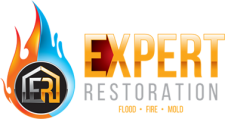The reason why we are covering this subject is that it has some controversy associated with it. When it comes time to file a water damage claim, you will want to make sure you understand these categories. In some cases, you will find that the insurance adjuster or insurance company might try to re-categorize or change the classification of the water damage, so they can justify a lower payout. We want to make sure you are educated and knowledgeable.
There are various different sources of flooding. Natural disasters to burst pipes or sewer lines can all be causes for flooding to occur in a property. Restoration professionals are often called to repair water damage and mitigate flooded properties. The water damage restoration process is highly regulated, so there is an assurance that properties damaged by flood or sewer events can be effectively restored to a safe space for the homeowner or building occupant and that workers remain safe during the water cleanup.
3 Categories of Water Damage
The Institute of International Cleaning and Restoration Certification (IICRC) is an accreditation given by the American National Standards Institute (ANSI). This government body sets the standard for the water damage restoration process for both best practices in remediation and safety.
The IICRC.three main categories of water damage that result from a wide range of causes. These can be from a broken potable water line, a rupture of a drain waste and ventilation (DWV) pipe carrying gray water, a backup of a sewage line sending biologically contaminated black water through a building or a natural disaster where brackish runoff or seawater floods the property. These classifications are based on the level of contamination of the water responsible for the damage.
The three water damage categories are:
- Category 1 Water Damage: This is where the water originates from a portable or sanitary source and is fit for human consumption. This water does not pose a threat to ingestion, dermal or inhalation exposure. Sources typically include broken supply lines, sprinkler systems, overflowing containers with no contaminants or natural sources like rain or meltwater. This is known as “fresh” or “clean” water.
- Category 2 Water Damage: This is where the water contains significant contamination and potentially can cause sickness or discomfort if humans consume or come in contact with it. This type of water contains unsafe levels of microorganisms and/or chemical or biological matter such as diluted urine, detergents, seepage from hydrostatic pressure or ruptured storage tanks. This is known as “grey” water.
- Category 3 Water Damage: This is where the water is “grossly contaminated” and contains harmful pathogenic and toxigenic agents. Raw sewage is by far the most common offender of “black” water and can be deadly to people and destructive to the property if sewage damage restoration is not completely remediated. Sources of black water include sanitary sewer backups, brackish water from rivers and streams, flooding seawater and all forms of ingress from natural events where contaminants like pesticides and heavy metals are carried into a building.
It is important to note that one category of water damage can amplify into a more serious category if not remediated quickly. Wet, warm and enclosed areas are perfect breeding grounds for organic pathogens. Spores quickly multiply and become mold that can move an easy cleanable Category 1 spill into a hazardous and expensive Category 3 situation.

4 Water Damage Intrusion Classes
The IICRC further separates water intrusion into four classifications:
- Class 1: It is when a minimal amount of water has flowed onto not very porous materials. This class of water damage requires limited mitigation and little moisture is left after most of the water is removed, leaving a minimal amount of evaporation needed to finish drying. An example would be a broken hot water tank on a sealed concrete floor or an overflowing toilet on a tile floor.
- Class 2: This is where there is a significant amount of water is flowing and the exposed materials are mild to very porous. A lot of absorption of water occurs with the materials and the water damage process is lengthened due to the volume of water. It will take longer to remove the water and to dry the area. Examples would be a ruptured pressurized water line inside a drywalled wall, or a wooden floor joist system.
- Class 3: It is where a large amount of water, regardless of its category, is absorbed by very porous materials, resulting in the highest rate of evaporation necessary to effectively remove the water and moisture. An example would be leaking related to a storm, which floods a building’s interior and soaks carpeted areas, or broken water mains filling an underground parking area.
- Class 4: This is where water intrudes and is trapped by building materials and pools, which makes the restoration process difficult, time-consuming and expensive. Affected areas are highly porous or tightly confined and require special methods and equipment, longer drying time or substantial vapor pressure differentials. An example would be stormwater flooding any wooden, plaster, masonry or concrete enclosures or a severe sewage backup that penetrates the floor and wall systems.
When the categories and classification of the water damage have been assessed, the proper steps can then be taken to mitigate and repair the water damage. Each range of categories, compounded by the class of water intrusion, will require different skills for assessing the damage and selecting the right remediation process and equipment. This is why you need Expert Restoration to handle your water cleanup & restoration. We are IICRC certified and have over 25 years of local experience. Expert Restoration has experience with residential as well as commercial water damage restoration. Call Expert Restoration of Utah today at 801-642-4347 for all of your water cleanup needs.

